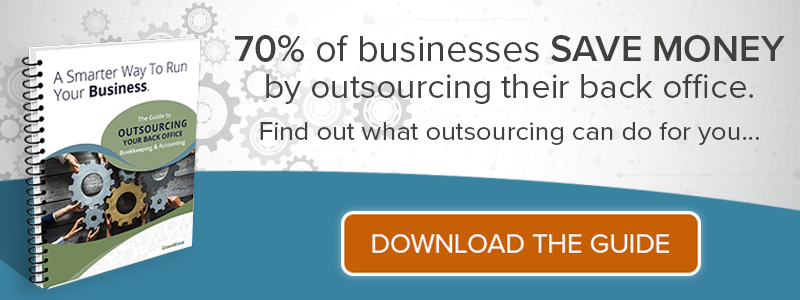
Some people go into business because they want to make the world a better place, some want to make a better product, some want to provide a better service, and others simply want to make money. Regardless of the reason your business exists, at the end of the day, your business has to have a strong bottom line.
Profits generate growth, attract investors and keep a business on the right path to success. Without a profit, no business owner can improve the world, their products or their services. The more profits a business generates, the more improvements a business can make in the future; profitable businesses lead to growth and success.
You want to succeed personally, and you want your business to succeed, so it's important to always keep a few points top of mind. Consider implementing the following strategies to increase profits and grow your business...
1. Remember, You Have to Spend Money to Make Money
Your business will not generate profits if you spend no money at all. Supplies, employees, commercial space, materials and inventory all cost money, but are essential expenses for operating a successful business. Do not be afraid to spend money when it is necessary to generate a profit.
2. But Don't Forget a Dollar Saved Is Worth More Than a Dollar Earned
Understanding the difference between profits and profitability is essential to operating your business. Every dollar your company earns in profit has a price tag (cost of goods sold + indirect expenses). So, each dollar in profit is actually worth less than each dollar your company never spent.
By calculating your business profit margin, you can determine how much you have to spend for every dollar your company earns.
You can increase profits both by saving expenses and increasing prices. Saving expenses, however, will improve your profit margins but only at a one time multiple of the amount of costs you save. You will make more money at a quicker rate if you increase prices.
3. Never Stop Pinching Pennies
You should also be careful not to become complacent about fees and late payment charges.
Take a careful look at the fees you pay for services (such as banking, technology, financing and communication). Shop around for lower prices or try to negotiate your fees to a lower price point.
4. Don't Add Expenses Just Because You Can Afford Them
When businesses have proven their models and have reliable sources of revenue, business owners often become complacent with saving and loosen the purse strings. You should not, however, add unnecessary expenses just because you can afford them.
Be careful about how you decide to spend your company's profits, limiting new expenses to costs which will generate business growth or more revenue.
5. Unit Economics Reveals Where You Can Save
Unit economics will help you determine where you can save money in order to improve profit margins and increase profits.
By understanding your unit economics you will see exactly how pennies saved on both direct and indirect expenses can make a drastic improvement to your bottom line.
Consider how Walmart's recent decision to change their parking lot light bulbs to LED and switch floor wax brands has saved the company an estimated $220 million – now, that's one bright and shiny idea!
6. Evaluate the Value of Each Client and Job
Use accurate job costing and cost allocation to determine which of your clients or types of jobs are the most profitable and which are the least profitable. Adjust pricing structure or eliminate the products and services which are not as profitable to focus on those which generate the most profits.
7. Fully Leverage Accurate Project Costing
With accurate project costing, you can pinpoint where redundancies and other wasteful spending exist in your business model and workflow.
Use project costing to re-evaluate your workflow, examine your spending for jobs and customer acquisition then optimize your pricing to increase profits.
8. Always Charge Enough, Never Give Away Your Product or Services
As your company grows, its expenses also increase. Periodically, you might need to re-evaluate your prices, as your business grows and its overhead expenses expand, too.
Unfortunately, many business owners simply don't realize that pricing is, in fact, THE most vital component when it comes to making money.
Price your items poorly, and you're leaving money on the table. Price your items well, and you'll beat out your competition without diminishing the perceived quality of your brand.
9. Consider a Change in Pricing Structure
You should also consider how changing your pricing structure might increase profits or improve customer retention. Subscriptions, deposits, retainer fees and loyalty incentives should all be evaluated.
The customer wants a price that’s reasonable in terms of the scope and quality of the product or service. In some instances, innovation and timeliness can play a role, too.
10. Practice Cross-Selling and Up-Selling
Use cross-selling and up-selling to maximize revenue on every sale.
Chiropractors offer health supplements to patients, car washes up-sell with wax coats and other fancy finishes, and you can add low-cost, complementary (not complimentary) bells and whistles to your services, too.
11. Keep Impeccable Accounts Receivable and Accounts Payable
You should pay your bills and receive payment on a precise, punctual schedule. Take advantage of early payment incentives, when possible, and other times try not to pay bills until they are due to increase your interest income in holding accounts.
You should also set up your receivables schedule to reduce days sales outstanding and minimize potentially catastrophic cash flow gaps.
12. Increase Customer Retention
Take a look at your customer acquisition costs compared to your customer lifetime value to determine whether you need to improve your customer retention rates.
The longer you hang onto a customer, the more revenue each customer generates and the more return on investment you gain from your original acquisition costs.
13. Track and Leverage the Right Key Performance Indicators
Keep accurate, up-to-date and timely books to generate the regular financial reports that will allow you to measure and track essential key performance indicators (KPIs).
With a record of KPIs such as your business profit margin, cost per square foot, customer acquisition cost, days sales outstanding, customer lifetime value and unit economics, you will be able to anticipate and avoid cash flow challenges, while pulling the levers of your business to maximize profits.
14. When Possible, Outsource Instead of Increasing Staff
Almost anytime you can hire a well vetted, licensed and insured contractor, instead of hiring a full-time employee, you will save money. Employees cost much more than their salaries: hiring, training, paid time off, insurance, taxes, supplies, etc.
Consider outsourcing your company's non-essential functions, such as marketing, research, and bookkeeping and accounting to experts within those industries.
Partner with GrowthForce's Expert Outsourced Accounting Solutions to Increase Your Business Profit Margin
A strong outsourced accounting solutions provider will help you implement financial strategies to measure your business's performance, forecast its financial future and increase profits and profitability. As your business grows, GrowthForce can scale its bookkeeping and accounting services to match your company's size and demands. Your business and its bottom line will benefit from a dedicated team of bookkeepers, controllers and CFOs with experience and insight into the unique challenges of your company's industry and market.

.png?width=563&height=144&name=New%20GF%20Logo%20(37).png)


